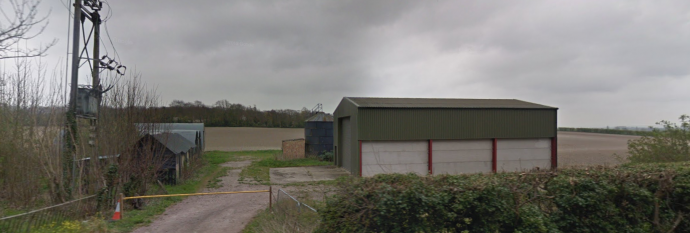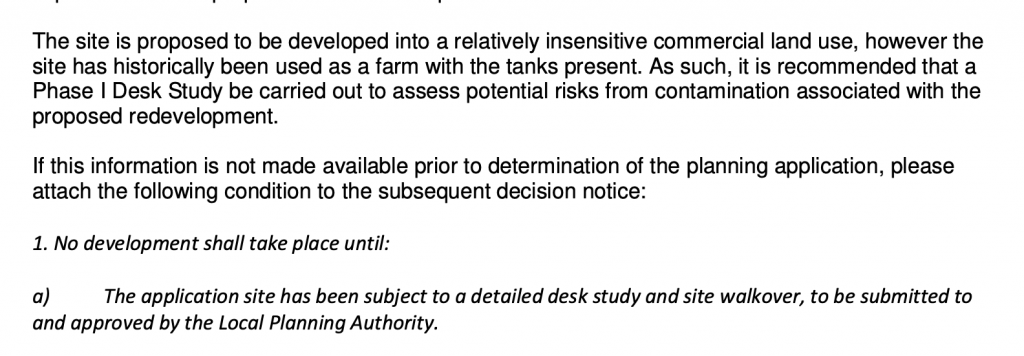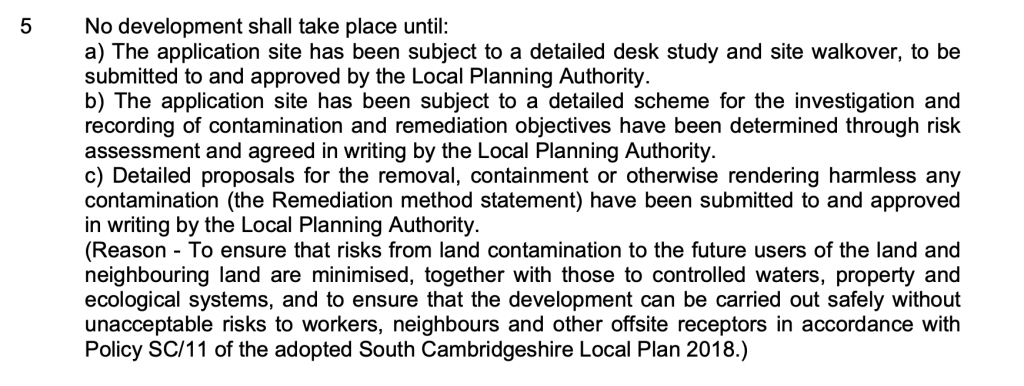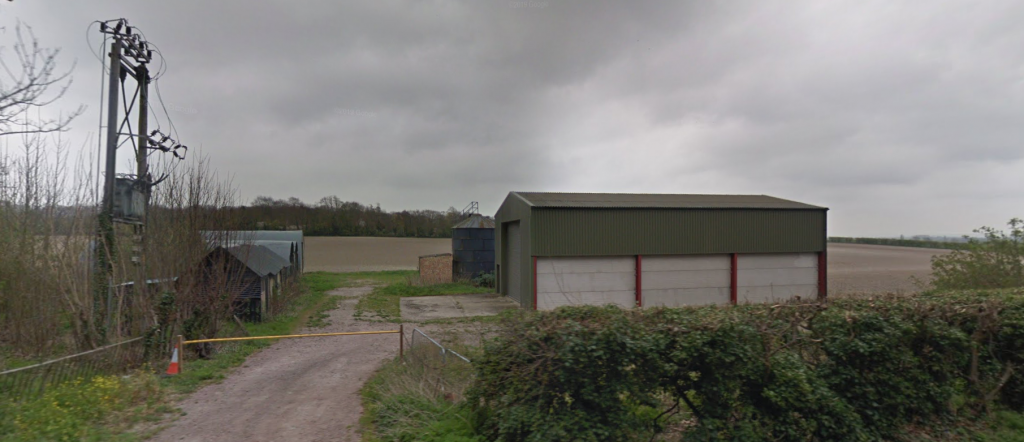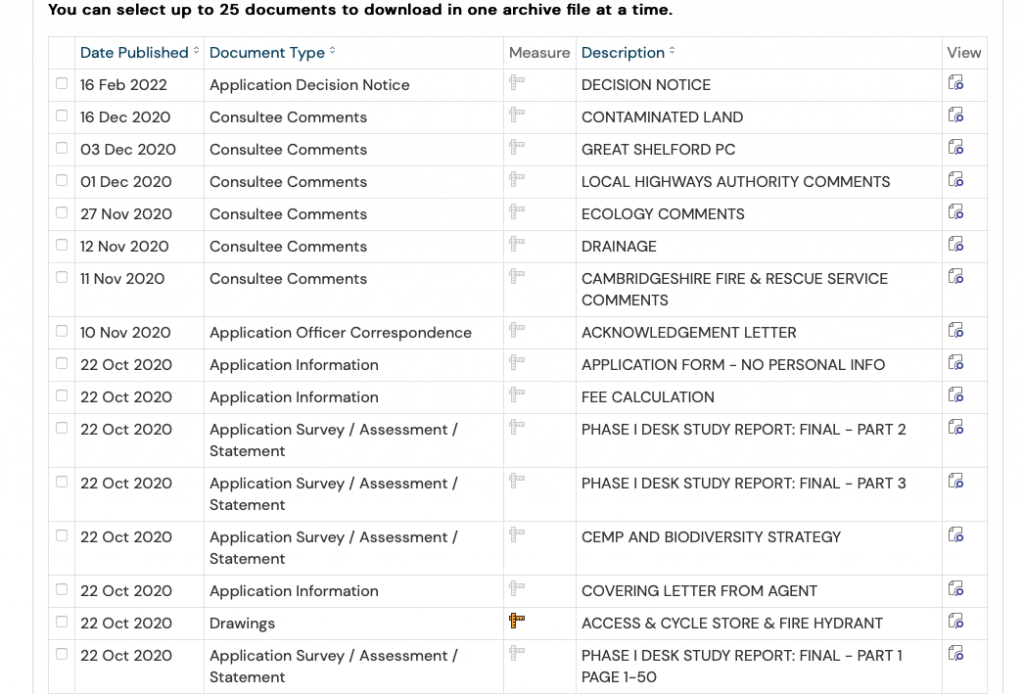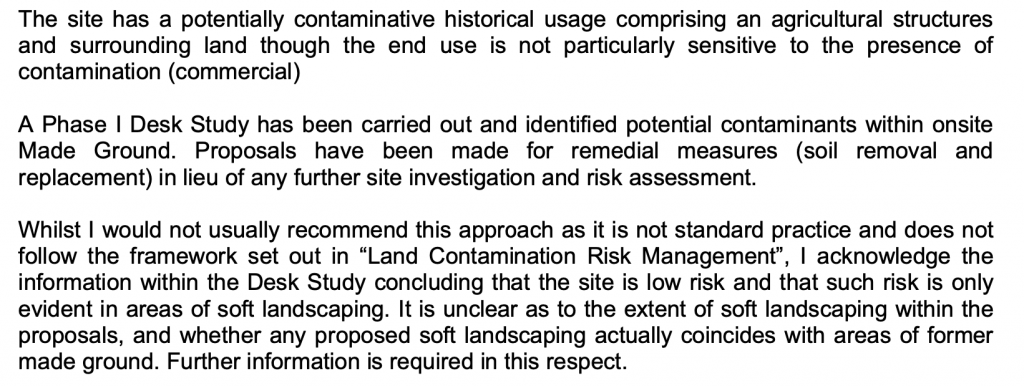Conversion of Agricultural Buildings to Commercial, Hinton Way, Great Shelford, Cambridge, CB22
Case Study Reference: CS20-08-08
Planning Authority: South Cambridgeshire District Council
Planning Reference: S/3333/19/FL and S/3333/19/CONDA
Synopsis:
As part of the application the contaminated land team were consulted on the application and the potential for the site to pose a risk to human health, as there is a historical industrial use for the site and the sensitivity of the development a contaminated land planning condition was attached to the decision notice.
The first stage of discharging the contaminated land planning condition (5) was to prepare a Phase I desk study report, this assesses the potential for a site to be impacted by using a wide range of sources including Ordnance Survey maps, information provided by regulators (Environment Agency, local authority, Coal Authority, BGS etc.).
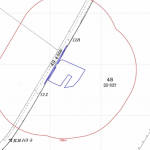 The history
The history 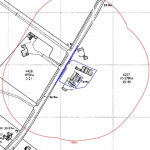 of the site and the surrounds was researched using a combination of historical O.S. maps, aerial plates and street level imagery. The maps revealed the site was undeveloped until 1971 when the site was occupied by a number of buildings, street level imagery confirmed the buildings were agricultural. The tanks identified on the O.S. maps appeared to be silos on the street level imagery.
of the site and the surrounds was researched using a combination of historical O.S. maps, aerial plates and street level imagery. The maps revealed the site was undeveloped until 1971 when the site was occupied by a number of buildings, street level imagery confirmed the buildings were agricultural. The tanks identified on the O.S. maps appeared to be silos on the street level imagery.
A review of the planning history of the site did not reveal any salient information.
The published geology revealed no drift deposits were present and the bedrock (chalk) was present at the surface.
Data provided by regulators confirmed the presence of tanks on the southern boundary of the site.
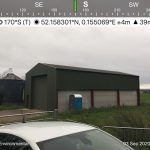 On completion of the desk based assessment a site walkover visit was undertaken, the confirmed the site was occupied by a number of agricultural buildings.
On completion of the desk based assessment a site walkover visit was undertaken, the confirmed the site was occupied by a number of agricultural buildings.
The information collected in the desk study report was used in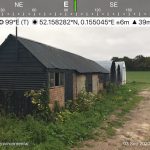 a qualitative risk assessment to assess the potential sources of contamination and to determine what potential sources warranted further works, this concluded that the only potential source of contamination was made ground on site. As the porposed development was low sensitivity remediation in lieu of further works were proposed.
a qualitative risk assessment to assess the potential sources of contamination and to determine what potential sources warranted further works, this concluded that the only potential source of contamination was made ground on site. As the porposed development was low sensitivity remediation in lieu of further works were proposed.
The desk study report was submitted (S/3333/19/CONDA) to partly discharge the contaminated land planning condition. The proposals were accepted and more details relating to the locations of the landscaped areas were requested.
The additional landscaping details were provided and a revised desk study report was issued (S/3333/19/CONDB)

